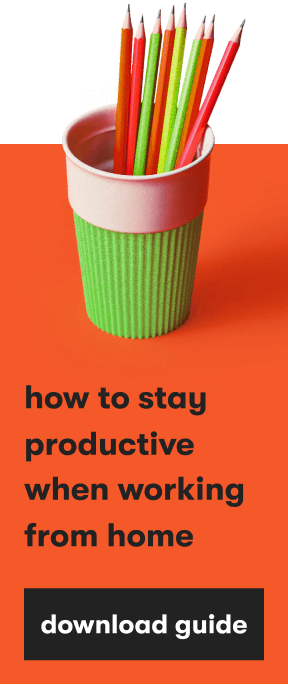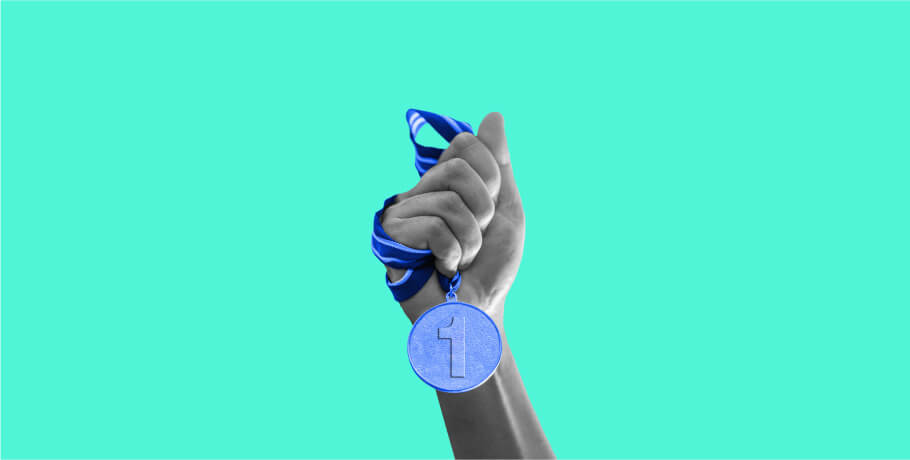In the last ten years, the number of people working remotely has grown by 115%, not surprising when you consider the advantages. Remote employees can work where they want, on their own schedule, and without excess supervision. But there are challenges as well.
We spoke to some of our EPAMers and asked them to share their experience and recommend how to stay productive while working remotely.
1. Make a schedule
The lack of supervision can lead to a lack of discipline. It’s tempting to sleep late and easy to get distracted by household chores – after all, you have so much time! To maintain discipline, plan your day, including start, finish, and lunch breaks. Then work to keep to that plan. Self-supervision may seem hard at first, but psychologists say that any habit can be established in 21 days.
To avoid getting distracted, book working hours in your calendar and keep to them. Imagine that you have a meeting with yourself to work on your tasks.

2. Don’t forget to take breaks and motivate yourself
Lunch breaks aren’t just for eating – take a walk, stretch or meditate so that you’re refreshed when you get back to work. Such breaks keep your work and personal time separate – and keep you from getting too sedentary.
When you work remotely, the line between work and personal life can disappear in the blink of an eye. You wake up, reach for your laptop, and bam, you’re at work. And to keep from living a real-life Groundhog Day, you have to motivate yourself. You can have all the pros of remote work (walks and your own schedule) and none of the cons (traffic jams, office noise and other distractions).

3. Get out of the ‘flow’
When the line between work and downtime is blurred (the janitor isn’t going to kick you out of your house at midnight like they would at the office), you can end up getting in the ‘flow.’ This means losing a sense of reality and time, something that often happens when you’re working on something interesting. Mihaly Csikszentmihaly described this phenomenon in his work.
It’s great getting into the flow at work. But you can compare it to a long-distance race, where you have to conserve your energy to keep from blowing up after the first few miles. Time-management software can help you by letting you know you’ve been at work for too long.

To avoid burnout, don’t forget to take two full days off each week, and don’t forget to spend time on your hobbies and with friends and family.
4. Take breaks between tasks
Use this old time-management trick: 45 minutes of productive work followed by a 15-minute break. Or come up with a time that works for you. Microsoft trainers suggest the following: 30 minutes for routine work, a 30-minute break, one hour of more focused work followed by an hour-long break, and finally two hours of concentrated work on your main task. This format keeps you in tune with the workday flow and keeps your concentration on the process.
You can also try the Pomodoro method. Just set a timer for 25 minutes and get to work with no distractions. If you have any unrelated ideas, write them down for later. When the timer goes off, give yourself a five-minute break. Do this for four cycles before giving yourself a 15- to 30-minute break. You can use apps like Pomodoro Timer or Focus To-Do (for Windows, Android, and iOS) by Microsoft.
At home, you have plenty of options for breaks: from laundry or fixing a power outlet to meditation. Psychologists say that the best rest is changing up what you do – psychical tasks relax you after mental work.
5. Set up a comfortable office where you work
Choose a room or corner of the room with a desk. This is your new office. And remember: once you get to the office, you’re at work.
If there’s a lot of noise around, turn on some music and work in headphones. One good service for sound isolation is noisli.com.
To keep your family from appearing in your video conferences, try a sign on the door or a stoplight to let them know when they can or can’t come in.
Creating a dedicated work space has allowed me to maintain focus, increase my productivty, and avoid the distractions of working from home.

6. Keep work and personal time separate
It’s comfy at home, and you’ll find yourself wanting to watch videos, tidy up, or wash the windows. Don’t give in to temptation. If you find yourself wanting to do it anyway, ask yourself: “Could I do this at the office?” If the answer is no, don’t do it at home either.
Talk to your family and explain that when you’re at the ‘office,’ you are not to be disturbed. This will keep them from distracting you with small talk or asking you to go to the store/meet the delivery person/cook dinner/clean house/fix the vacuum cleaner.
And finally: feed the cat so it can sleep soundly and not distract you.
Mental and physical breaks from the computer are important in a typical work day so planning them at home are just as critical. Taking a dedicated lunch break helps structure break time, whether it provides a midday check in with your family, or simply gives your body the rest and nourishment it's used to.

7. Don’t work in your PJs
Get dressed for the office. This will help to get you in the right frame of mind for work. Psychologists say that our brains take comfortable everyday clothes as a signal to relax – and office clothes as a signal to work productively. And work wear also sends a signal to family that you’re not to be disturbed.
Every day I get dressed to go to the office, even though my office is 30 feet from my bedroom! I find it’s good psychologically to be ready for the day and be fresh for the work ahead.

8. Learn time management
If you’re multi-tasking, analyze and optimize your actions. You can use the new MyAnalytics extension in Office 365. It lets you see how you spend the day and will tell you how to increase productivity.
Another tool to help you organize your time is Eisenhower Matrix, named after Dwight D. Eisenhower, 34th president of the USA. He suggested dividing all tasks into four priority categories:
- Urgent and important – do these without delay.
- Important but not urgent – you can do these calmly, without hurrying, thinking about each step.
- Urgent but unimportant – tasks that steal time and effort and that are better delegated.
- Not urgent and unimportant – the last things you should do, and only when there’s nothing with higher priority.
Make a rule that you’ll do the most unpleasant tasks in the morning. Brian Tracy in Eat that Frog says that if you do that stuff early, you’ll be in a better mood the rest of the day. After all, the worst is behind you.
If you learn to plan your day and set priorities and boundaries, you’ll reap the full benefits of remote work – and not only maintain productivity, but increase it. This will bring you professional benefits as well. We hope this advice from EPAMers will help you do just that 😊.

Technical Lead @residently. Specialised in Design Systems, DevOps, and a certified Design Sprint facilitator. CrossFit and Travel 🏝.
Technical Lead @residently. Specialised in Design Systems, DevOps, and a certified Design Sprint facilitator. CrossFit and Travel 🏝.
Explore our Editorial Policy to learn more about our standards for content creation.
read more




















